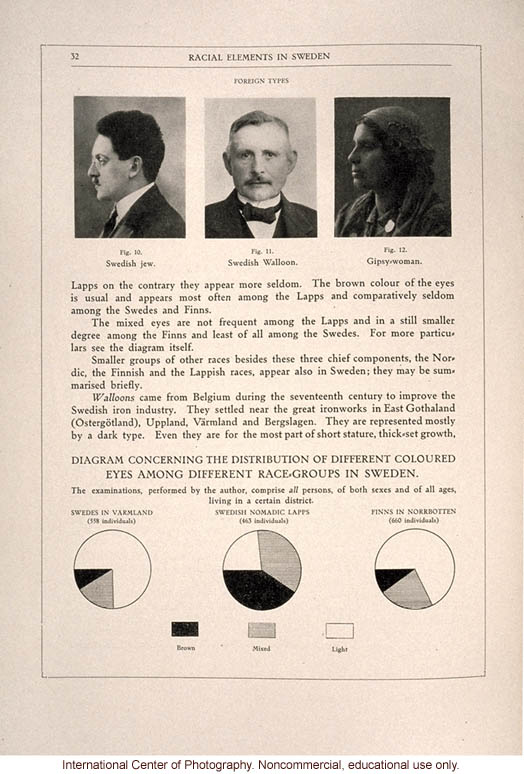[hairline boxed text]
32 Racial Elements in Sweden
[hairline score]
Foreign Types
[3 photos][photo captions] Fig. 10. Swedish jew.
Fig. 11. Swedish Walloon.
Fig. 12. Gipsy-woman.
Lapps on the contrary they appear seldom. The brown colour of the eyes is usual and appears most often among the Lapps and comparatively seldom among the Swedes and Finns.
The mixed eyes are not frequent among the Lapps and in a still smaller degree among the Finns and least of all the Swedes. For more particulars see the diagram itself.
Smaller groups of other races besides these chief components, the Nordic, the Finnish and the Lappish races, appear also in Sweden; they may be summarized briefly.
[italics]Walloons[end italics] came from Belgium during the seventeenth century to improve the Swedish iron industry. They settled near the great ironworks in East Gothaland (Ostergotland), Uppland, Varmland and Bergslagen. They are represented mostly by a dark type. Even they are for the most part short of stature, thick-set growth,
[figure title] Diagram concerning the distribution of different coloured eyes among different race-groups in Sweden.
[figure text]The examinations, performed by the author, comprise [italics]all[end italics] persons, of both sexes and of all ages, living in a certain district.
[left]Swedes in Varmland
(558 individuals)
[center]Swedish Nomadic Lapps
(463 individuals)
[right]Finns in Norrbotten
(660 individuals)
[figure illustration]
[end]


